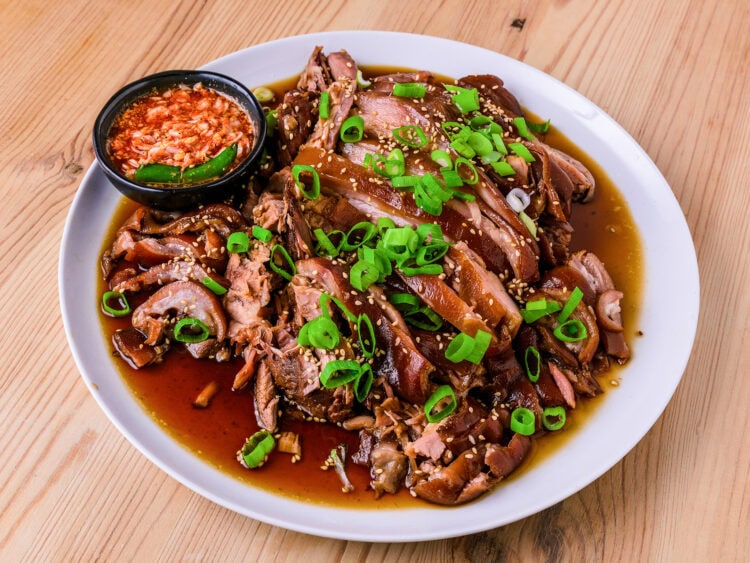A traditional recipe for braised Korean pork hocks. Tender, flavorful, and super convivial to enjoy with family or friends
If you like Chinese hong shao rou or the famous Vietnamese braised pork, then you’ll love this little spin-off from Korean cuisine. Braised pork belly is well-known by now. But what’s less common (yet just as popular in traditional Asian cuisine) is the braised pork hock.
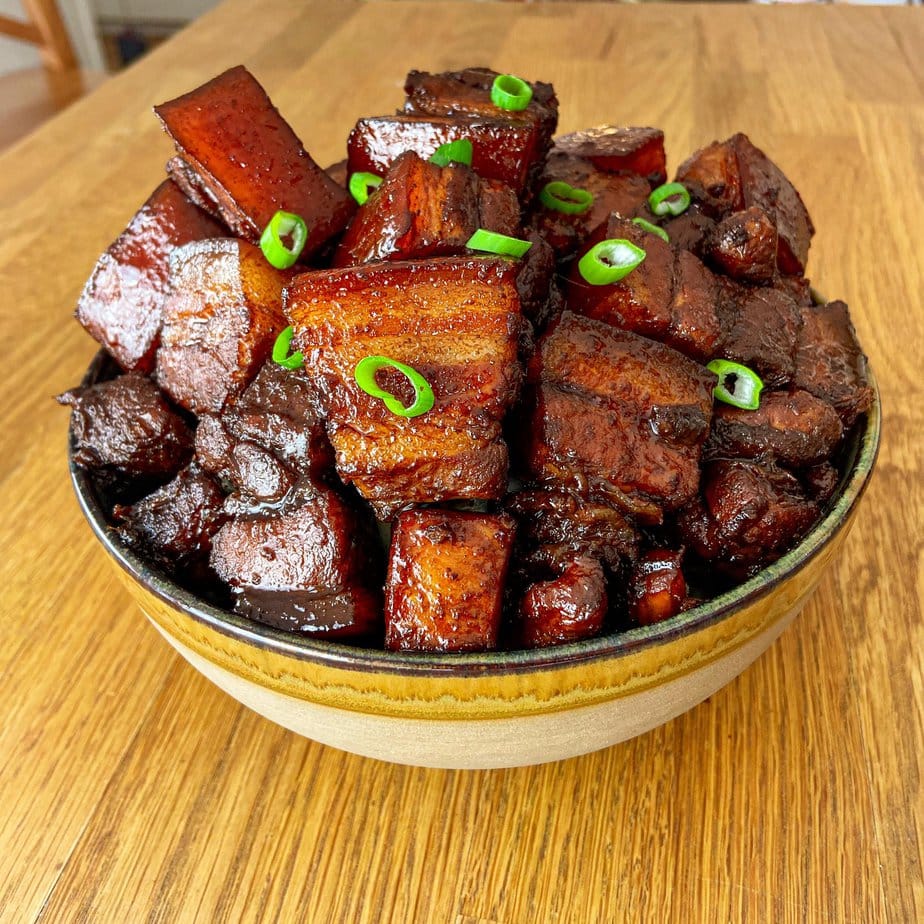
De part la nature de la pièce de viande (très épaisse, grande quantité de collagène), la manière de le manger varie par rapport à la poitrine. On obtient une belle pièce qui, malgré le mijotage la rendant très très tendre et juteuse, peut être coupée en fines lamelles et ensuite tremper dans une délicieuse sauce maison. Pour les amateurs de cuisine thaï, c’est l’équivalent coréen du Khao Kha Moo.
In short, it’s very convivial, can be enjoyed as an appetizer or main course, and promises an intense pleasure for your taste buds.
As a bonus, it’s a slow-cooked/braised dish, so you don’t need to spend hours watching over it in the kitchen
What Is Jokbal?
Le jokbal (족발) est donc un plat coréen de porc braisé à base de Jarret et de pieds. Il fait partie de la famille des Anju, désignant les plats que l’on consomme avec de l’alcool. D’autres plats de cette catégorie incluent le japchae ou le samgyeopsal.
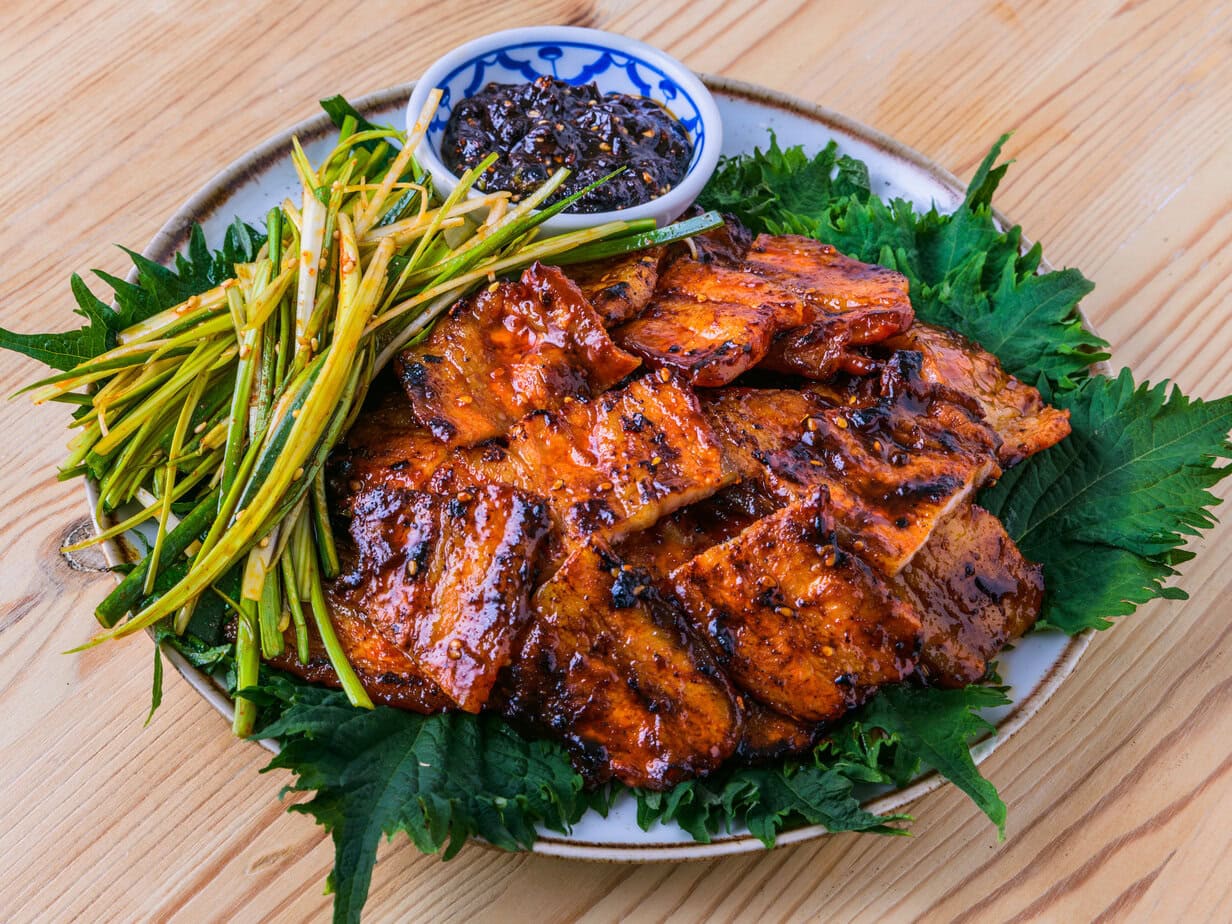
You’ll find the deboned pork pieces after cooking, cut into thin slices and served with a dipping sauce. You can (optionally) wrap it in a shiso leaf or lettuce, add some ssamjang sauce, and dip it in the sauce.
You really have to imagine a sort of appetizer platter served on a high round bar table with glasses filled with soju. In France, they give us peanuts; in Korea, it’s slices of braised pork, haha
The Main Ingredients for the Jokbal Recipe
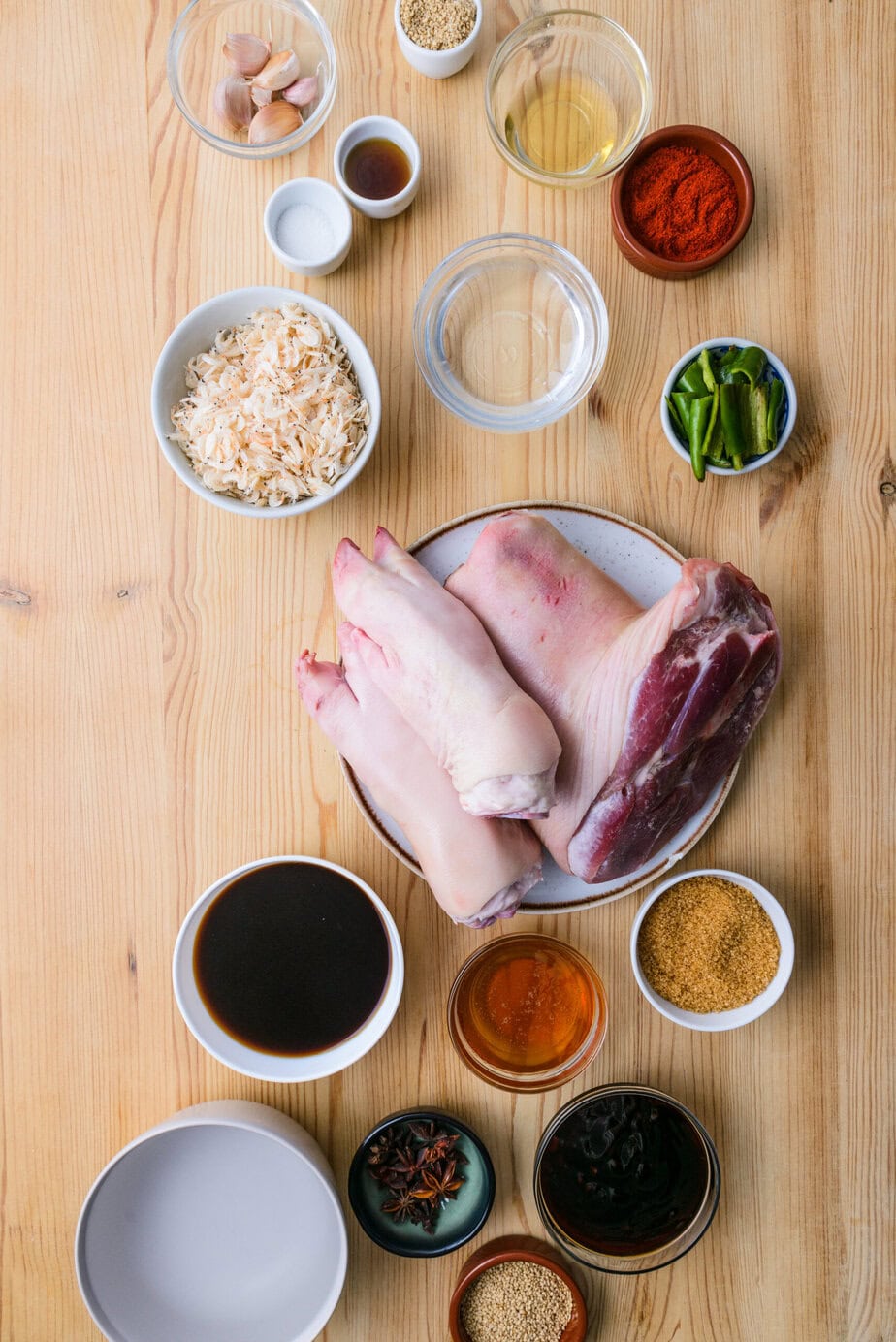
The pork: Here, the hock or knuckle (unsalted) is almost mandatory. As a highly recommended option, pork feet bring even more collagen to the whole dish, which gives the sauce a better texture
Rice syrup: can be found in Asian grocery stores. In a pinch, you can substitute with corn syrup, or even homemade invert syrup, but the latter has a higher sweetening power I believe, and I haven’t had the chance to test it. So be careful with the quantities.
Oyster sauce: doesn’t taste like oyster but is a fundamental aromatic component of the dish, not to be neglected
“Star anise:” brings a welcome hint of anise flavor. Can be replaced with fennel seeds, but then it’s better to put the seeds in a small spice bag, otherwise they’ll go everywhere and it will be unpleasant to eat
Light soy sauce: salty soy sauce found in all supermarkets
Gochugaru: Korean chili powder used to spice up the dipping sauce
Fish sauce: adds salt to the dip
Mirin: used to sweeten the sauce with subtle sake notes
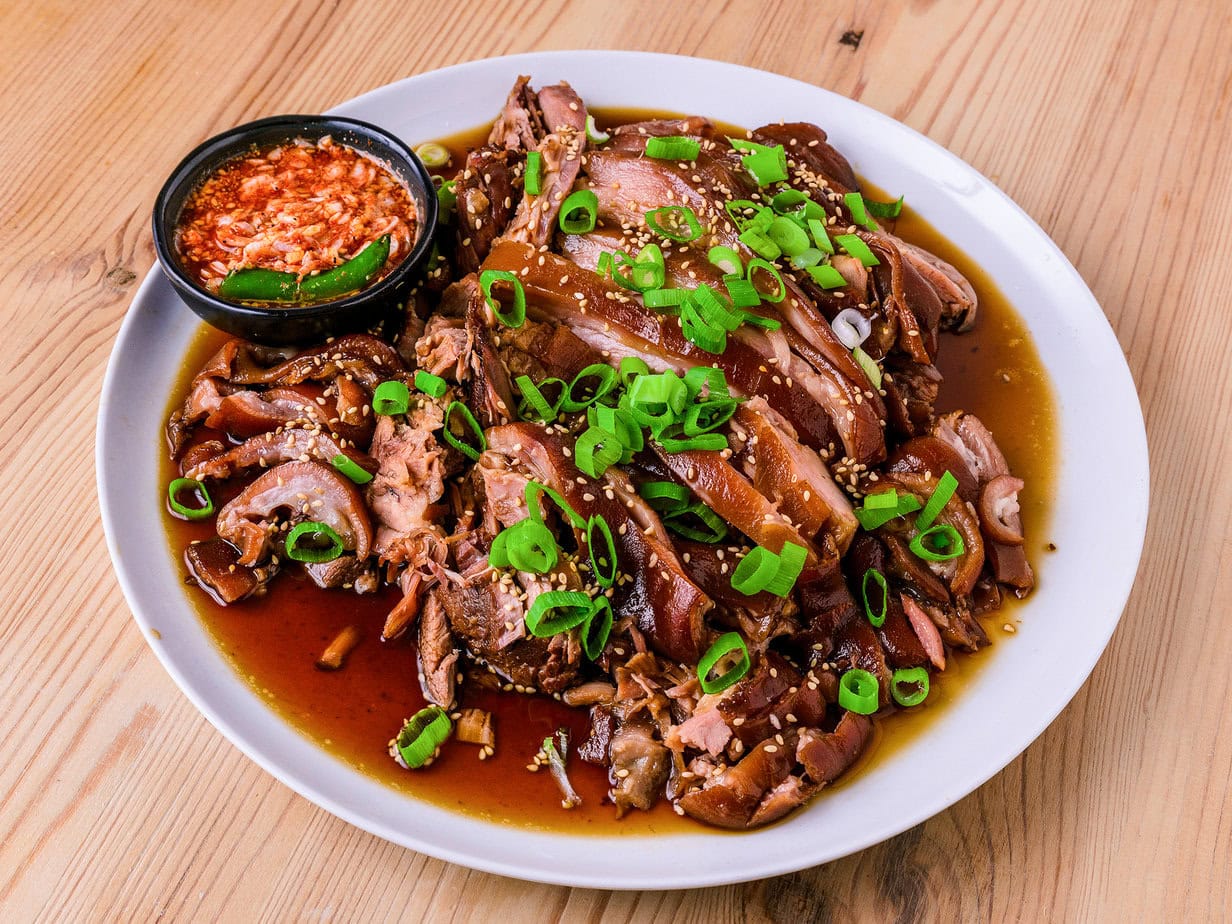
Authentic Jokbal – Korean Braised Pig trotters
Ingredients
- 1 Pork shank or ham hock, unsalted
- 2 pig trotters optional
- 240 ml light soy sauce
- 120 ml of rice syrup
- 220 g of brown sugar
- 600 g of oyster sauce
- 550 ml water
- 10 star anise
- White sesame seeds for garnish
- Green onions thinly sliced, for garnish
Dipping sauce
- 4 Cheongyang green chili peppers washed and sliced (widthwise). Use any green chili pepper as a substitute (not green bell pepper!)
- 75 g of salted shrimp finely chopped
- 10 g of gochugaru
- 4 g white sugar
- 20 g of mirin
- 0.5 teaspoon of fish sauce
- 25 g garlic sliced
- 100 g of Chilsung Cider or a Sprite-type soda
- 10 g of sesame seeds lightly crushed
Instructions
- Bring water to a boil in a large pot and submerge the pork shank and pig’s feet for 7 minutes to remove impurities and odors1 Pork shank, 2 pig trotters

- Rinse the meat thoroughly with cold water after the initial cooking
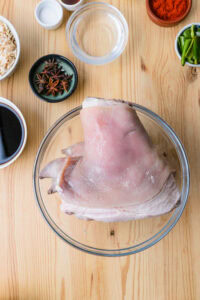
- Use a disposable razor to remove any remaining hair if necessary
- Place a wok on the stove and pour in the soy sauce, rice syrup, sugar, oyster sauce, and water240 ml light soy sauce, 120 ml of rice syrup, 220 g of brown sugar, 600 g of oyster sauce, 550 ml water
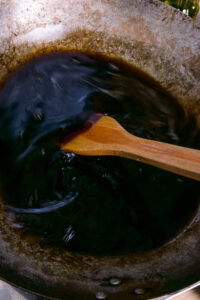
- Mix until the sugar is completely dissolved
- Add the star anise to the mixture10 star anise
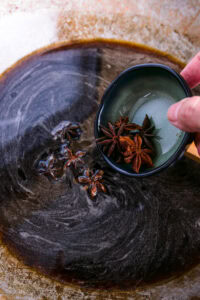
- Add the meat

- Bring to a boil and let the mixture boil over high heat for 10 minutes
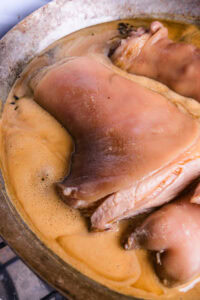
- Reduce to medium heat and cook the meat for 1 hour and 30 minutes. Cover
- Turn the meat every 30 minutes to thoroughly soak it in sauce and even out the color. Cover each time.
- When the meat is tender, don’t hesitate to uncover and increase to high heat to reduce and slightly caramelize the sauce for a nice color (don’t forget to turn the meat regularly and be careful not to burn it). The sauce should remain slightly liquid

- Move to a cutting board and cut the ham hock into thin slices (with the rind visible). You can also debone the feet.
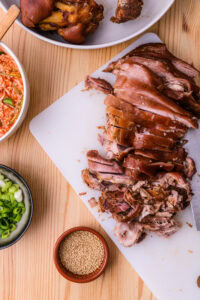
- Serve on a large platter, pour some of the remaining sauce over it, and garnish with sesame seeds and green onionsWhite sesame seeds, Green onions
- Serve with the dipping sauce
Dipping sauce
- Place the sliced chili peppers in a bowl4 Cheongyang green chili peppers
- Add the chopped salted shrimp to the bowl75 g of salted shrimp
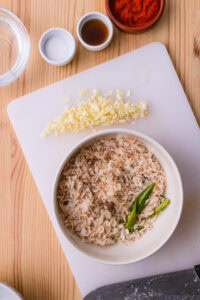
- Add the gochugaru and mix well10 g of gochugaru
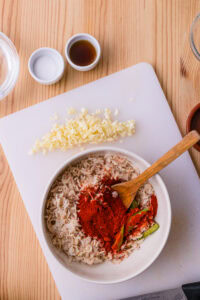
- Add the sugar, then mix again4 g white sugar
- Pour in the mirin and incorporate it into the mixture20 g of mirin
- Add the fish sauce and mix0.5 teaspoon of fish sauce
- Incorporate the minced garlic25 g garlic

- Add the Chilsung Cider (or Sprite) and mix everything well100 g of Chilsung Cider
- Add the sesame seeds and mix carefully10 g of sesame seeds

- Taste the sauce to adjust flavors if necessary
Notes
Let the dipping sauce rest in the fridge for 24 hours for better flavor
